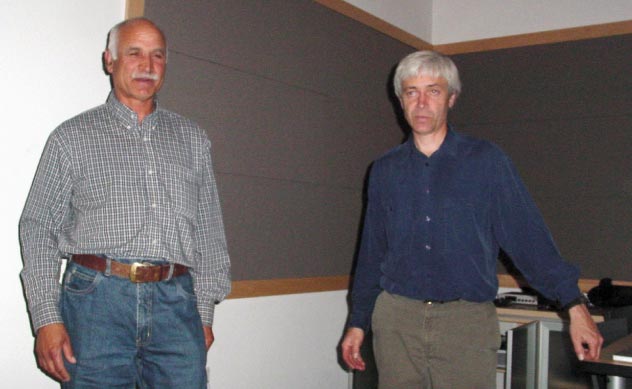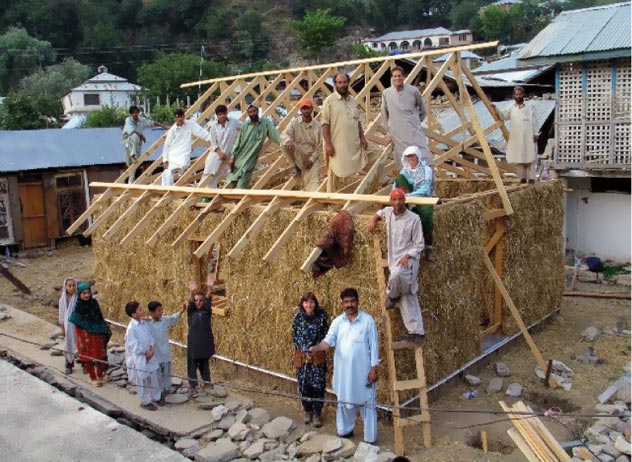|
|
|
ADVERTISEMENTS
|
|
PREMIUM
- HAPPY HOLIDAYS!
- Siliconeer Mobile App - Download Now
- Siliconeer - Multimedia Magazine - email-Subscription
- Avex Funding: Home Loans
- Comcast Xfinity Triple Play Voice - Internet - TV
- AKSHAY PATRA - Bay Area Event - Sat. Dec 6
- Calcoast Mortgage - Home Loans
- New Homes in Silicon Valley: City Ventures - Loden Place - Morgan Hill
- Bombay to Goa Restaurant, Sunnyvale
- Buying, Sellling Real Estate in Fremont, SF Bay Area, CA - Happy Living 4U - Realtor Ashok K. Gupta & Vijay Shah
- Sunnyvale Hindu Temple: December Events
- ARYA Global Cuisine, Cupertino - New Year's Eve Party - Belly Dancing and more
- Bhindi Jewellers - ROLEX
- Dadi Pariwar USA Foundation - Chappan Bhog - Sunnyvale Temple - Nov 16, 2014 - 1 PM
- India Chaat Cuisine, Sunnyvale
- Matrix Insurance Agency: Obamacare - New Healthcare Insurance Policies, Visitors Insurance and more
- New India Bazar: Groceries: Special Sale
- The Chugh Firm - Attorneys and CPAs
- California Temple Schedules
- Christ Church of India - Mela - Bharath to the Bay
- Taste of India - Fremont
- MILAN Indian Cuisine & Milan Sweet Center, Milpitas
- Shiva's Restaurant, Mountain View
- Indian Holiday Options: Vacation in India
- Sakoon Restaurant, Mountain View
- Bombay Garden Restaurants, SF Bay Area
- Law Offices of Mahesh Bajoria - Labor Law
- Sri Venkatesh Bhavan - Pleasanton - South Indian Food
- Alam Accountancy Corporation - Business & Tax Services
- Chaat Paradise, Mountain View & Fremont
- Chaat House, Fremont & Sunnyvale
- Balaji Temple - December Events
- God's Love
- Kids Castle, Newark Fremont: NEW COUPONS
- Pani Puri Company, Santa Clara
- Pandit Parashar (Astrologer)
- Acharya Krishna Kumar Pandey
- Astrologer Mahendra Swamy
- Raj Palace, San Jose: Six Dollars - 10 Samosas
CLASSIFIEDS
MULTIMEDIA VIDEO
|
|
|
|
|
RELIEF:
Straw Bale Homes: PAKSBAB at Work
The October earthquake in 2005 claimed about 70,000 people in the Kashmir region, and part of the reason was that homes made up of concrete, bricks and mortar blew up into deadly rubble. Homes from compressed straw bales are much safer and environmentally more sustainable, according to a relief group that’s building straw bale homes in Pakistan, writes Ras Hafiz Siddiqui.

(Above): Architect Martin Hammer (r) and his Pakistani associate Saleem Khan are part of a project to build compressed straw bale homes in areas of Pakistan ravaged by the October 2005 earthquake.
Building homes with straw bales? You gotta be kidding, you are probably thinking.
No I am dead serious. Or at least PAKSBAB is.
PAKSBAB — Pakistan Straw Bale and Appropriate Building — was the topic of discussion May 7 in Sacramento, Calif., at an event hosted by Sacramento Emerging Green Builders, a group of environmentally conscious people who arrange meetings frequently to promote construction which is more in harmony with nature than standard traditional methods. The topic this time for the group was “Rebuilding with Straw Bale in Earthquake Affected Pakistan” during which Martin Hammer, a program advisor and architect with PAKSBAB presented an interesting picture of the efforts of the group and its activities in the area of northern Pakistan devastated during the October 2005 earthquake.
Measuring an estimated 7.6 on the Richter scale, the calamity killed over 70,000 people in Pakistan and Kashmir (on both side of the Line of Control with India ). It leveled the town of Balakot almost completely and caused extensive damage in Abbottabad and the surrounding areas as the deaths associated with it reached as far as the nation’s capital of Islamabad. Over 100,000 people were seriously injured and millions were left homeless. The world responded as best it could after the tsunami disaster that hit the East Asia and the Indian Ocean region not too long before this earthquake.
America responded quickly as its Chinook helicopters flew sometimes around the clock to drop food and bring medical aid. Many doctor groups from around the globe rushed to the scene including teams places as far apart as Turkey and far away Cuba. American medical professional groups from New York to San Francisco did not take long to reach the scene either.
But what finally became of the traumatized and now homeless survivors?
Many of us remember reading the story of the Three Little Pigs and the Big Bad Wolf trying to blow their houses down. In the case of this earthquake the result was pretty much the opposite. Bricks, mortar, concrete all fell on helpless residents in Kashmir and Pakistan, killing and injuring many. Traditional construction with such material turned out to be the reason for the huge death toll. Something else had to be suggested for future rebuilding efforts. Straw bales, it appears, fit right in with the region’s seismic as well as environmental profile. Straw is used to feed animals there during winter and its surplus is usually destroyed after spring because it gets wet and animals have fresh grass and other fodder to consume till winter arrives again. The idea that surplus straw can be compacted into bales and used in construction certainly has merit. Homes can be made earthquake resistant, energy efficient and in turn reduce deforestation (in an area where wood is already becoming very difficult to obtain).
Martin Hammer started his presentation by introducing the group to an actual straw bale and also to his friend visiting from Pakistan, Saleem Khan (Jadoon) from the town of Kakul (famous for its military academy). He also presented a brief history of building with straw bales starting in Nebraska (1908) to the more recent interest in New Mexico (1990’s) here in America along with efforts in Belarus, South Africa and the Czech Republic (2002). Needless to say, the technology has been around for a while, but with substitute materials easily available, it has not caught on like wood frame and sheetrock here in California and concrete, bricks and mortar in Pakistan (before the earthquake).
Martin also presented a photograph of a huge landslide on the Neelum River during the 2005 earthquake. Saleem Khan elaborated that the landslides were more pronounced due to deforestation that had already taken place, leaving very little to hold the soil together.
Khan also shared his personal story of where he was when the earthquake hit. He was underneath a door at a jeweler’s shop (for his daughter who was soon to be married) which he held on to for dear life as many structures collapsed around him, choking on dust and debris, thinking that he was going to die. He said that the local people were informed of events by the radio broadcasts of the Pashto language news via the BBC since local stations were out. He said that many children were killed at their schools (concrete construction). He also gave many details about the casualties.

(Above): A straw bale home being built in Pakistan’s earthquake affected area.
Next we saw a photograph of the collapsed Margalla Towers structure in Islamabad and the devastation at the Hillkot Village in the earthquake area. Hammer explained why straw bale construction was more suited for that part of Pakistan, but added that many challenges were faced when it was implemented (good bales were difficult to acquire as they were very fluffy at first). It also took some time for local people to get convinced. Martin added that the landscape in northern Pakistan was similar to that of the Sierra foothills. He said that a straw bale house could be manufactured in the area for about $2,500.
Construction with straw bale was described from its foundations on up. The use of bamboo pins/sticks and twine was detailed as was moisture control especially around the windows of a straw bale dwelling. Waste systems were also discussed. There was a short segment on heating and cooling and cooking along with solar water heating for such houses. The finishing of these houses both on their exterior and interior was also described by Martin.
What just has to be mentioned here is that locals in the earthquake impacted areas of northern Pakistan are full participants in construction with straw bale and are learning to soon become self-sufficient enough to construct their own houses. That in itself is enough of a reason for the Pakistani-American community to look at PAKSBAB (please visit http://www.paksbab.org/) very seriously. Seismic tests are currently under way at the University of Nevada at Reno to give the project its official seal of approval.
Thanks are in order to people like Martin Hammer, Darcey Donovan and Shannon Whitnack here in America for connecting with Saleem Khan and Surkhab Khan in Pakistan and for helping people there help themselves. The recent deadly earthquake in China is another grim reminder that nature can devastate lives anywhere and at any time. We have to be able to help one another because in the end it is all about building bridges between people and cultures on the human level. That this particular bridge is made of straw does raise an eyebrow or two, but the results are much stronger than we may think.
|
 Ras Hafiz Siddiqui is a South Asian American writer who lives in Sacramento, Calif. Ras Hafiz Siddiqui is a South Asian American writer who lives in Sacramento, Calif.
|
|
|
|
|
|